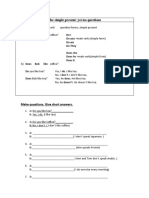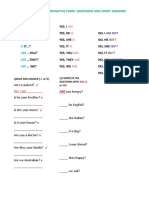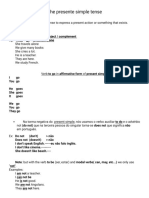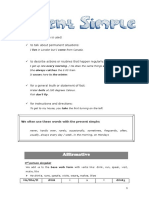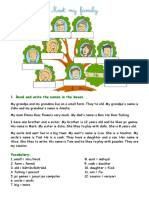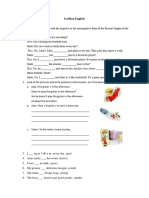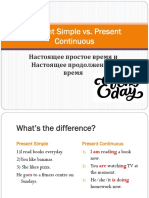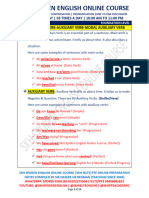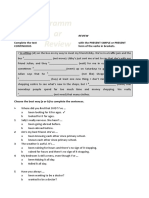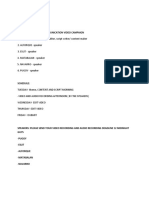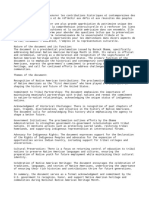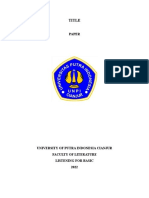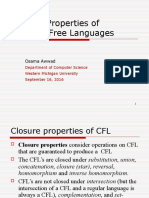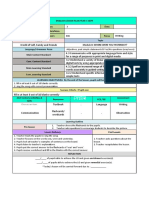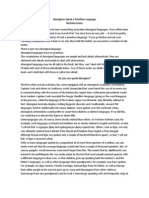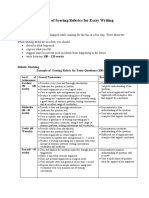0% found this document useful (0 votes)
413 views6 pagesSimple Present
This document provides a study guide on the simple present tense in English. It begins with instructions to look up unknown words, complete all exercises, and ask questions. Then, it explains the basic structures of the simple present tense for affirmative, negative, and interrogative sentences. It provides conjugation tables and examples for regular verbs and the irregular verbs "be", "have", "do", and "go". Finally, it lists exercises for students to complete, including a quiz with a QR code link and pages in their course books.
Uploaded by
izaqueCopyright
© © All Rights Reserved
We take content rights seriously. If you suspect this is your content, claim it here.
Available Formats
Download as PDF, TXT or read online on Scribd
0% found this document useful (0 votes)
413 views6 pagesSimple Present
This document provides a study guide on the simple present tense in English. It begins with instructions to look up unknown words, complete all exercises, and ask questions. Then, it explains the basic structures of the simple present tense for affirmative, negative, and interrogative sentences. It provides conjugation tables and examples for regular verbs and the irregular verbs "be", "have", "do", and "go". Finally, it lists exercises for students to complete, including a quiz with a QR code link and pages in their course books.
Uploaded by
izaqueCopyright
© © All Rights Reserved
We take content rights seriously. If you suspect this is your content, claim it here.
Available Formats
Download as PDF, TXT or read online on Scribd
/ 6
